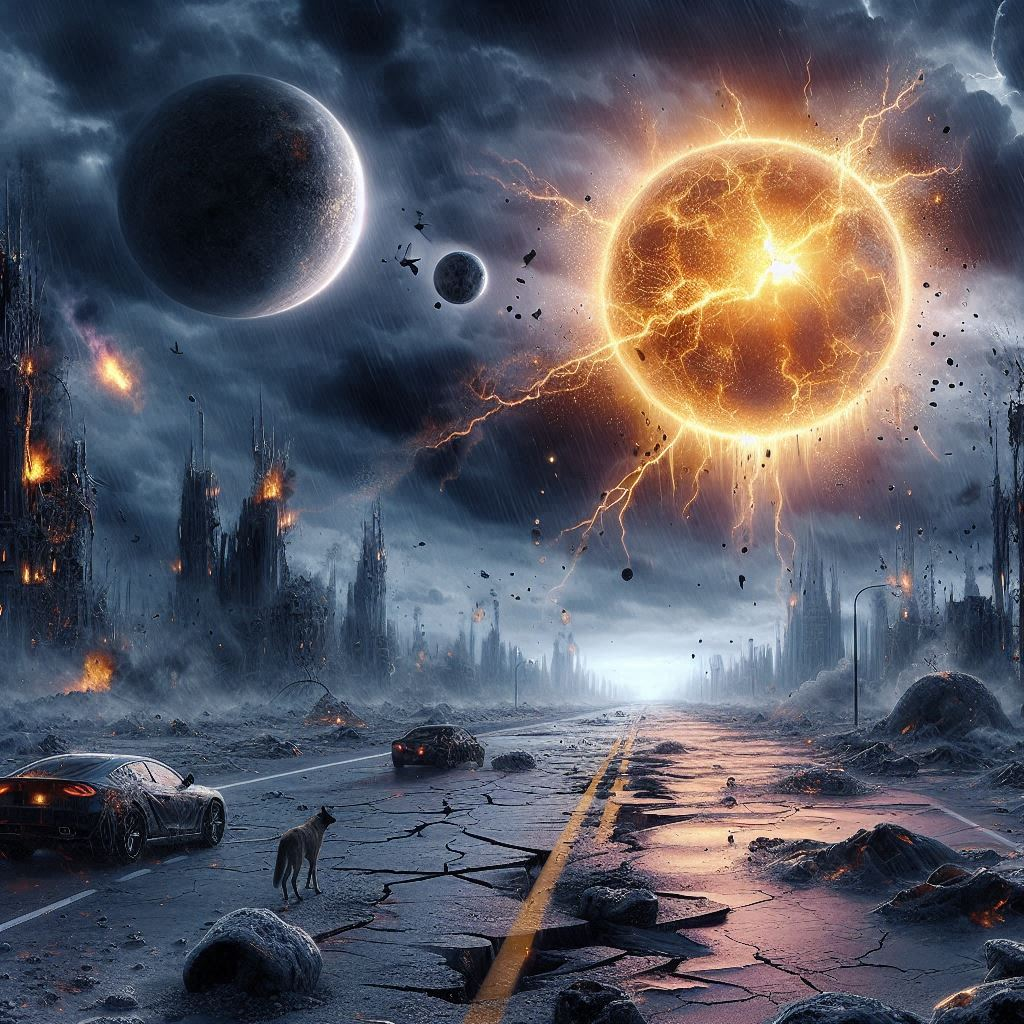For billions of years, the sun—our dear star—has been a constant in our lives. Our world is shaped by its warmth, light, and gravitational pull in ways that we frequently take for granted. But what if the sun were to suddenly disappear for three days due to some cosmic twist? Let’s examine the devastating effects of such an occurrence.
1. Emergent dimness:
The sudden transition from day to night would disturb a lot of human and natural activities. It would be confusing and disorienting for diurnal creatures, it might be easier for nocturnal animals to adapt. Plant growth and flowering cycles, which rely on sunlight for cues, would be disrupted. Humans would face logistical challenges due to the sudden darkness, which would affect daily activities like routines and communication. Streetlights and artificial light sources would become essential for navigating in the dark, but their limited reach might increase people’s feelings of isolation and anxiety.
2. Rapid Temperature Drop:
The consequences of a sharp temperature drop go far beyond simple discomfort. Crops and other freezing-sensitive infrastructure, like water pipes, could be harmed or possibly destroyed. It would take an enormous amount of emergency personnel to respond to cases of hypothermia and exposure to the cold. Since the elderly, young children, and people with pre-existing medical conditions would be particularly susceptible to the cold, protecting them would require quick action. Resources for shelter and heating would become valuable commodities, potentially leading to conflicts over access and distribution.
3. Effects of Photosynthesis:
Without sunlight, photosynthesis, which sustains life on Earth, would not be possible. Due to their inability to produce oxygen and glucose during this process, plants would wilt and eventually die in huge numbers. Herbivores will starve to death when plant-based food sources become scarce, leading to an ecosystem’s eventual collapse. Predators that relied on these herbivores would suffer similar fates, resulting in mass starvation and extinction events. The loss of vegetation would worsen soil erosion and desertification, as well as reduce the planet’s ability to support life.

4. Long-Term Effects of Temperature:
As the temperature falls further, the consequences get worse. Medical facilities that are already overworked would be overwhelmed by the epidemic of hypothermia and frostbite. The destruction of agriculture would lead to famine and global food shortages. Mass migrations and resource conflicts as people fought for their lives would result from human societies’ inability to adapt to the harsh new reality. There would be a startling number of cold-related deaths if there was inadequate heating and shelter.
5. Impact on Orbit:
An alteration in Earth’s orbit would bring about a state of chaos on a cosmic scale. Without the sun’s stabilizing force, the planet would float aimlessly through space, traveling at an unpredictable and perilous speed. The possibility of extinction-level events from collisions with asteroids or comets puts life on Earth in grave danger. The destabilization of Earth’s orbit can have far-reaching effects that unexpectedly change its climate and geological activity, even if direct impacts are avoided.
The Future of Humanity:
People who stayed on Earth would not have a good future. There would be a mass famine due to the lack of sunlight and deadly low temperatures. Subterranean shelters and stored resources would be essential to our survival.

Humanity’s Fate:
Earth would eventually turn into a lifeless, icy rock. If the atmosphere were to completely collapse, we would be exposed to cosmic radiation. Our planet, which had once been vibrant, would float aimlessly, a silent monument to the dying sun.
Thank goodness, this scenario stays firmly in the science fiction domain. Life continues to flourish beneath the sun’s warm embrace. Therefore, let us be grateful for our celestial companion and the light it shines on our planet. 🌞🌍
In summary, a three-day solar eclipse would result in everything from sudden darkness and severe temperature drops to long-term disruptions of ecosystems and orbital stability. Humanity and all life on Earth would face unprecedented challenges that would require ingenuity, cooperation, and tenacity to overcome.
Frequently Asked Questions.
Q: Can the Earth survive without the sun for an extended period of time?
A: The Earth’s reliance on the sun for energy and warmth renders prolonged sun absence unsustainable for life as we know it. Without the sun’s energy, temperatures would plummet, ecosystems would fail, and the planet would become uninhabitable.
Q: How would a sunless period impact agriculture and food production?
A: Even a few days without sunlight would disrupt photosynthesis in plants, stunting growth and potentially causing widespread crop failures. This would have a ripple effect on food supplies and agricultural economies.
Q: What steps could be taken to mitigate the effects of a temporary sunless period?
A: While a three-day sunless world is purely hypothetical, preparing for such extreme events could include developing alternative energy sources, implementing emergency food storage and distribution plans, and improving indoor farming technologies to sustain populations during the darkness.
